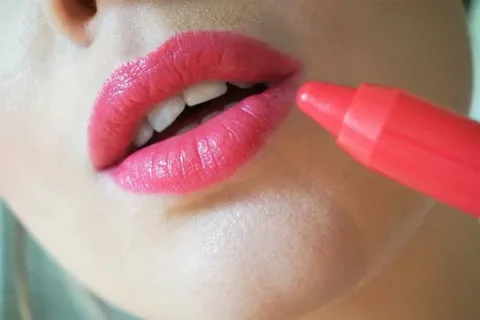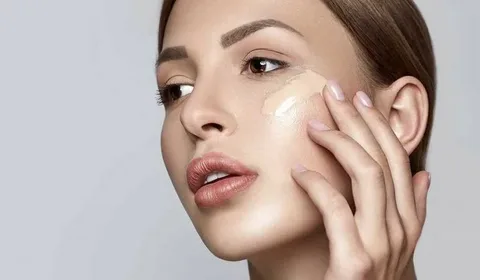Primer is a crucial step in any makeup routine, as it helps to create a smooth, even canvas for the rest of your makeup.
By applying primer, you can improve the longevity of your makeup, enhance the color payoff of your products, and address specific skin concerns like pores, fine lines, and uneven texture.
In this comprehensive guide, we’ll explore the different types of primers, how to select the right one for your needs, and the proper techniques for applying primer like a pro.
Types of Primer
Primer comes in a variety of formulations to target different skin concerns and makeup needs. Here’s a quick overview of the main categories:
Face Primer
Face primers are designed to be applied all over the complexion, creating a smooth, even base for foundation and other face makeup. They can help to minimize the appearance of pores, blur fine lines, and control shine throughout the day.
Eye Primer
Eye primers are specifically formulated for the delicate eye area. They help eye shadows and liners apply more smoothly and stay in place for longer, preventing creasing and fading.
Lip Primer
Lip primers are used before lipstick application to create a smooth, even surface and prevent feathering or bleeding. They can also help lipstick adhere better and last longer.
Color Correcting Primer
These primers contain pigments that counteract specific skin discolorations, like redness, dullness, or sallowness. They can be used all over or targeted to problem areas.
Hydrating Primer
Hydrating primers are designed to nourish and plump the skin, creating a dewy, healthy looking canvas for makeup.
Mattifying Primer
Mattifying primers help to control oil and shine, creating a more matte, velvety finish that’s ideal for oily or combination skin.
Selecting the Right Primer
When choosing a primer, consider your skin type and any specific concerns you want to address. Oily skin types may benefit from a mattifying or pore minimizing primer, while dry skin makeup may prefer a hydrating formula.
Those with redness or discoloration may want to look for a color correcting primer. It’s also important to consider the finish you want to achieve with your makeup. If you prefer a more luminous, glowy look, a hydrating primer may be the way to go.
For a more matte, smooth appearance, a mattifying or blurring primer could be the better choice.
Clean Hands Are Key
You don’t need any brushes, sponges, or other beauty tools to apply primer your own two hands will do the trick.
Since this product is made to fill your pores, it’s important to make sure that your hands are freshly washed to avoid clogging them with any extra dirt or oil from your fingertips.
Squeeze Out No More Than You Need
Start out with squeezing a pea sized amount of makeup primer onto the back of your hand. Doing this instead of applying directly to your face allows you to control the amount of product you use at a time.
You can always add more as you go, but this simple method helps to reduce product waste.
Focus on Areas You Want to Smooth the Most
While you want to create a flawless makeup base everywhere for your foundation, you’ll want to focus more product on the T zone to minimize your most visible pores.
The same goes for any other areas of the face with fine lines that need smoothing before applying the rest of your face makeup.
Be gentle in your application to avoid irritating or damaging your skin! This is especially important for the thin, delicate skin around the eyes.
Apply product in this area with your ring finger to ensure you’re using the lightest pressure possible.
Primer Application Techniques
Face Primer
- Start with a clean, moisturized face. Apply primer to the center of your face and blend outward, focusing on areas with larger pores or uneven texture.
- Use your fingertips, a makeup brush, or a damp makeup sponge to apply and evenly distribute the primer.
- Allow the primer to fully dry before applying foundation or other makeup products.
- For touch ups throughout the day, gently dab a small amount of primer over your makeup, focusing on the T zone or any areas that have become shiny.
Eye Primer
- Apply eye primer to the entire eyelid, from the lash line to the brow bone.
- Use your ring finger to gently pat and blend the primer, ensuring an even coverage.
- Allow the primer to set for a minute or two before applying eye shadow.
- For longer lasting eye makeup, you can also apply a small amount of primer to the inner corner of the eye and along the lower lash line.
Lip Primer
- Start with clean, exfoliated lips. Apply a small amount of lip primer directly to the lips, using your fingertip or a lip brush to spread it evenly.
- Focus on the center of the lips and work outward, making sure to cover the entire lip area.
- Allow the primer to dry completely before applying lipstick or lip liner.
- For touch ups, you can dab a small amount of lip primer over your lipstick to help maintain the color and prevent feathering.
Primer Dos and Don’ts
Dos:
- Allow primer to fully dry before applying other makeup products
- Use the right amount of primer a little goes a long way
- Layer primer with your other makeup products for best results
- Exfoliate and moisturize before applying primer for optimal wear
Don’ts:
- Apply primer over dry, flaky skin
- Use incompatible primer and makeup formulas (e.g., silicone based primer with water based foundation)
- Skip the primer prep step in your routine
When to Apply Primer
Primer should be applied as the first step in your makeup routine, before foundation, concealer, and any other face makeup. This allows the primer to create a smooth, even canvas for the rest of your products.
For the eyes, apply eye primer before eye shadow, liner, and mascara. And for the lips, use lip primer before lining and filling in with lipstick or gloss.
Throughout the day, you can touch up your makeup primer as needed, especially in the T zone or other areas that tend to get shiny. This will help to extend the wear of your makeup and maintain a flawless finish.
Conclusion
Incorporating primer into your makeup routine is a game changer when it comes to achieving a smooth, long lasting look.
By understanding the different types of primers and how to properly apply them, you can create a flawless base for your makeup that addresses your specific skin concerns and desired finish.
Remember to experiment with various primers to find the perfect match for your skin type and needs. With the right primer, you’ll enjoy better makeup application, enhanced color payoff, and improved wear throughout the day.
FAQs
What is the purpose of using primer? Primer creates a smooth, even base for makeup application, helping to improve the longevity, color payoff, and overall appearance of your makeup.
How do I choose the right primer for my skin type? Consider your skin type and any specific concerns you want to address, such as pores, fine lines, or dullness. Oily skin may benefit from a mattifying primer, while dry skin may prefer a hydrating formula.
When should I apply primer in my makeup routine? Primer should always be the first step, applied before foundation, concealer, and other face makeup. For the eyes and lips, apply primer before eye shadow and lipstick, respectively.
How much primer should I use? A little primer goes a long way. Start with a small amount, about the size of a pea, and blend it evenly over the desired areas.
Can I use primer without foundation? Absolutely! Primer can be worn alone to smooth and perfect the skin, even if you’re not applying a full face of makeup.


